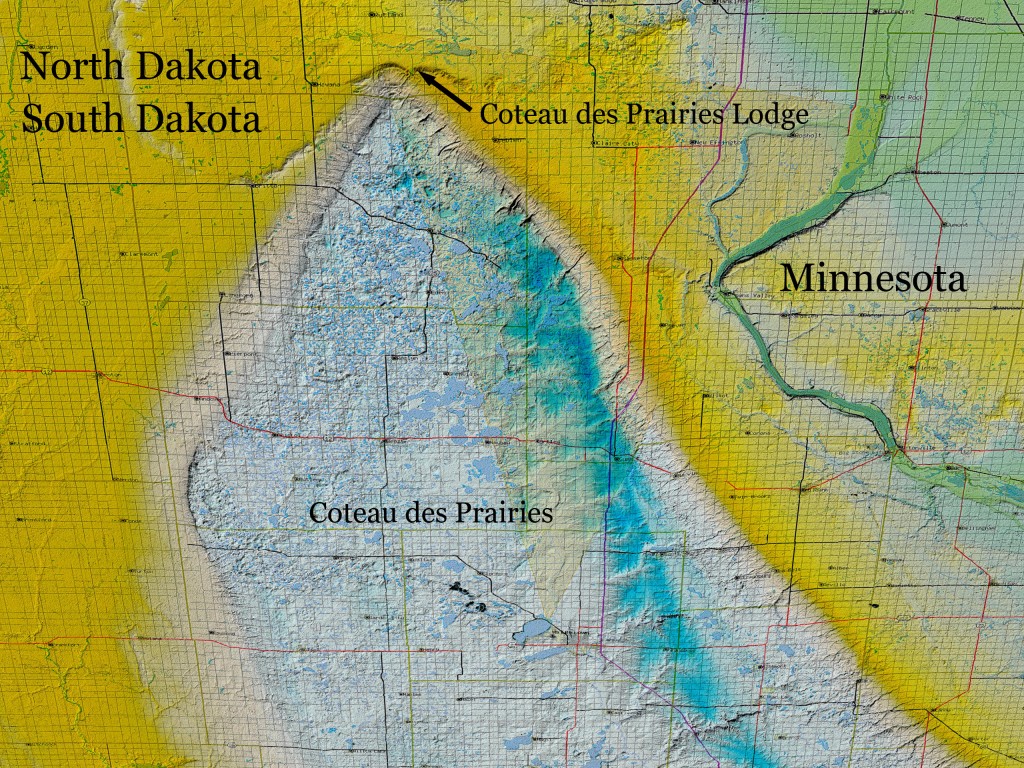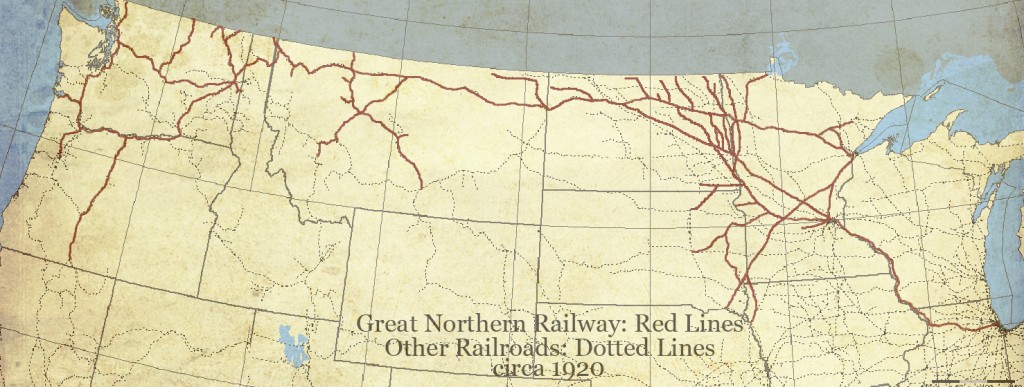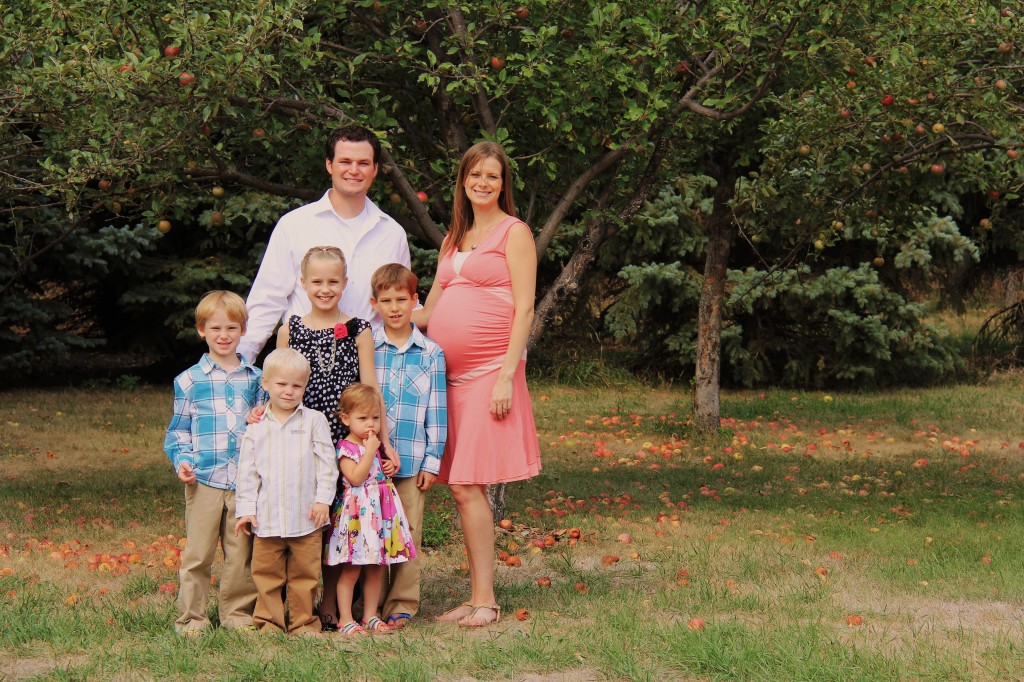Coteau des Prairies Legendary
By Phillip Breker
Unless you have been living under a rock, you have seen the familiar ‘North Dakota Legendary’ ad campaign. I find the theme fitting for the larger-than-life legends of North Dakota such as Lewis and Clark, Sacagawea, General Custer, Sitting Bull, Theodore Roosevelt and also the American bison, the rugged Badlands and the renowned farmland, blanketing the state.
Not to be completely unoriginal but I am intrigued by the concept of ‘legendary’ and I feel inclined to borrow their idea…just for the day. You see, there remains a place in North Dakota with a story untold; an interesting destination, which is seldom experienced, even by the folks of our great state. It is located along the South Dakota border in Sargent County. It is remote, it is undeveloped, it is scenic and it is historic. It is called the Coteau des Prairies.
I was raised at the foot of the Coteau des Prairies, where I developed a connection to the land and the people. For generations, my family has farmed the land here. It has long been our dream to share the experience of this delightful place. And now our dream is becoming reality. As a family, we built a lodge near Rutland, North Dakota. It is nestled on a hilltop in the Breker family pasture at the point where the plains and the Coteau des Prairies converge. The lodge boasts one of the premiere 360-degree views of the northern Great Plains. To the north the Coteau falls off abruptly to the plains which spread out flat as far as eye can see. To the south the Coteau continues to roll and rise to its peak in nearby South Dakota. Our guests will enjoy the grand log architecture of the lodge and the rustic theme, which embodies the ‘legends’ of the Coteau des Prairies.
The Coteau des Prairies of North Dakota is like the tip of an iceberg. What you see above the water’s surface is disproportionately smaller than what is below. Just the very tip of this 200 mile long elevated range edges north across the Dakota border. I may be prejudiced, but I dare say the very tip is the best part. South Dakota may boast about its glacial lakes and wooded ravines, which in their own right are quite splendid, but we have the view. 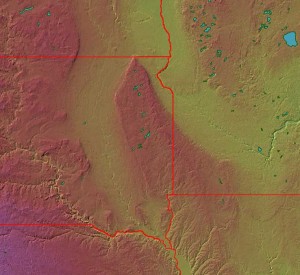 We have the unmatched view of the great northern horizon. Standing on the northernmost ridge of the Coteau des Prairies has been likened to sitting in the cockpit of an airplane. From the great room window in the lodge, the Coteau drops off immediately some 200 feet to the prairie floor where the elevation remains unchanged seemingly to no end. And what, you ask, is the big deal about that?
We have the unmatched view of the great northern horizon. Standing on the northernmost ridge of the Coteau des Prairies has been likened to sitting in the cockpit of an airplane. From the great room window in the lodge, the Coteau drops off immediately some 200 feet to the prairie floor where the elevation remains unchanged seemingly to no end. And what, you ask, is the big deal about that?
Exhibit A: There really is nothing quite like experiencing the sight of an approaching summer thunderstorm from Coteau des Prairies Lodge. It is one of my very favorite visual treats. Not only is the expanse of the sky fully visible but also the vast prairie stretches out before the hills like a patchwork quilt. And as a distant weather system develops and draws near, the ominous flashing clouds barrel across the sky while you watch tractors, cattle, farms, fields and prairie towns disappear as they are engulfed by the encroaching shadow. If you are lucky, the storm will pass to the north and you can witness the whole of this splendor while standing on the deck with a cup of coffee.
Exhibit B: Could there be a better place on Earth to enjoy the northern lights? I am not so sure. The 25′ wide and 30′ tall great room north window of Coteau des Prairies Lodge is like an IMAX screen built to display aurora borealis, which of course is one of the most breathtaking phenomena in all of God’s green creation. And you don’t even have to risk hypothermia in sub zero temperatures just to catch a glimpse; if you happen to be there when it appears, you can view the entire spectacle while conversing with a loved one from the comfort of cushy leather armchair.
Exhibit C: It is just plain hard to find a place that is like the head of the Coteau des Prairies. Really. Where else do you find a tall hill with a full view of flat prairie that isn’t obstructed by more hills or trees? It seems like wherever you find hills you find more hills, generally speaking. Or where do you go on the prairie to find an elevated view of the sprawling flatlands. OK, you can climb the local water tower. You’ve got me there. But is that really a practical venue for holding family events and social retreats? Not really.
Now that we’ve established the uniqueness of the location, let’s visit the amazing history, which inspires this article’s title: ‘Coteau des Prairies Legendary.’
As legend has it, the Coteau des Prairies, its beautiful glacial lakes and the prairie pothole region to the north were formed by the receding glaciers from past ice ages. Millions of tons of glacial till traveled hundreds of miles and bore the immense pulverizing load of the continental ice sheets before it was heaped up and shaped to become the Coteau des Prairies. Further shaping took place as subsequent waves of glaciers made their way through the area. If we could have seen Earth from outer space during that period, North Dakota would have looked just as white as Greenland or Antarctica do today.
Have you ever heard of Lake Agassiz? You would be hard pressed to find any significant body of water with that name on a map today. Like Atlantis, Lake Agassiz is an ancient water world of mystery and intrigue. Unlike Atlantis, Lake Agassiz is no fairy tale. It is estimated that thousands of years ago, following a major ice age, a massive body of water covered an area nearly the size of Texas. It covered parts of present day North and South Dakota, Minnesota, Saskatchewan, Ontario and nearly all of southern Manitoba. This humungous lake held more water than all other lakes on Earth today…combined. It is speculated among geologists today that the waves at the southern shore of Lake Agassiz may have lapped against the foothills of the Coteau des Prairies. Imagine standing on the Coteau where the lodge is being built and looking north across what would appear to be one of Earth’s mighty seas! The water eventually drained into the Hudson Bay and today that ancient lakebed provides some of the richest farmland on the planet…the Red River Valley.
Consider the great American bison, today a rare sight on the northern Great Plains, the bison once roamed in herds of thousands across the Coteau and prairie below. It is an amazing experience to stand at the top of the Coteau des Prairies and gaze out across the wide-open space now inhabited by farmers and imagine observing great herds of the enormous horned beasts grazing the endless virgin grasslands of ages gone by. Talk about legendary!
Of course, no lore of North Dakota is complete without the proud history of America’s native peoples. The storied culture of the Plains Indian is celebrated on the Coteau des Prairies. Around 500 years ago, the Sissetonwan (people of the fish village) and Wahpetonwan (people dwelling among the leaves) moved from the wooded lake area of present-day central Minnesota to the rolling prairie highlands of the Coteau des Prairies and surrounding regions. For generations, the Sisseton-Wahpeton Sioux people flourished here. With the introduction of horses in the Midwest the Great Sioux Nation became an equestrian culture whose hunting and ceremonial practices have come to define the American Indian in art and literature. Coteau des Prairies Lodge is located on the Lake Traverse Indian Reservation, where the Sisseton-Wahpeton Oyate thrives as they continue many of their forefathers’ traditions.
Many are familiar with the Lewis and Clark Expedition, which was chartered with the task of finding passage across America to the Pacific Ocean. In the fall of 1804, the expedition followed the Missouri River north as they passed west of the Coteau des Prairies. On a clear day they may have been able to spot it far off to the east. The famous map of their journey describes the Coteau des Prairies as a ‘High land covered with wood called Mountain of the Prairie’.
 While not as famous as Lewis and Clark, but just as important to the early westward expansion of the United States was a man named Joseph N. Nicollet. A French-born American, Nicollet was a brilliant astronomer and mathematician who was hired by the U.S. Government to explore the region of the upper Mississippi and Missouri River Valleys for the purpose of developing an accurate map of the area. On the return journey of his final expedition, while trekking southward across the grassy plains of eastern North Dakota he came upon the towering northern tip of the Coteau des Prairies. On the eve of August 15th, 1839, making camp on the shores of Sprague Lake, 3 miles southwest of present-day Rutland, Nicollet wrote: “The head of the Coteau is very near us. It presents an imposing mass, beautiful to eyes which have seen nothing but plains and rolling plateaus. It is the Alps of this area.”1 The following day (which happens to be my anniversary), the expedition ascended the 800-foot rise to the summit of the Coteau des Prairies. In Nicollet’s travels he spent weeks studying the Coteau des Prairies and befriending the Sisseton Indians, the native people of the area.
While not as famous as Lewis and Clark, but just as important to the early westward expansion of the United States was a man named Joseph N. Nicollet. A French-born American, Nicollet was a brilliant astronomer and mathematician who was hired by the U.S. Government to explore the region of the upper Mississippi and Missouri River Valleys for the purpose of developing an accurate map of the area. On the return journey of his final expedition, while trekking southward across the grassy plains of eastern North Dakota he came upon the towering northern tip of the Coteau des Prairies. On the eve of August 15th, 1839, making camp on the shores of Sprague Lake, 3 miles southwest of present-day Rutland, Nicollet wrote: “The head of the Coteau is very near us. It presents an imposing mass, beautiful to eyes which have seen nothing but plains and rolling plateaus. It is the Alps of this area.”1 The following day (which happens to be my anniversary), the expedition ascended the 800-foot rise to the summit of the Coteau des Prairies. In Nicollet’s travels he spent weeks studying the Coteau des Prairies and befriending the Sisseton Indians, the native people of the area.
Though Nicollet is more known for his work on the Mississippi River, his most memorable quote was inspired by the Coteau des Prairies: “In attempting a faint description of this beautiful country, my thoughts and feelings are painfully brought back to it…the vast and magnificent valley of the Red River, which there displayed itself before us, spreading itself in an almost insensible slope to the east and to the north, and bounded only by the horizon. May I not be permitted, in this place, to introduce a few reflections on the magical influence of the prairies? It is difficult to express by words the varied impressions which the spectacle produces. Their sight never wearies. To look at a prairie up or down; to ascend one of its undulations; to reach a small plateau, moving from wave to wave over alternate swells and depressions; and, finally to reach the vast interminable low prairie, that extends itself in front. Be it for hours, days, or weeks, one never tires; pleasurable and exhilarating sensations are all the time felt; ennui is never experienced. Doubtless there are moments when excessive heat, a want of fresh water, and other privations, remind one that life is a toil; but these drawbacks are of short duration. 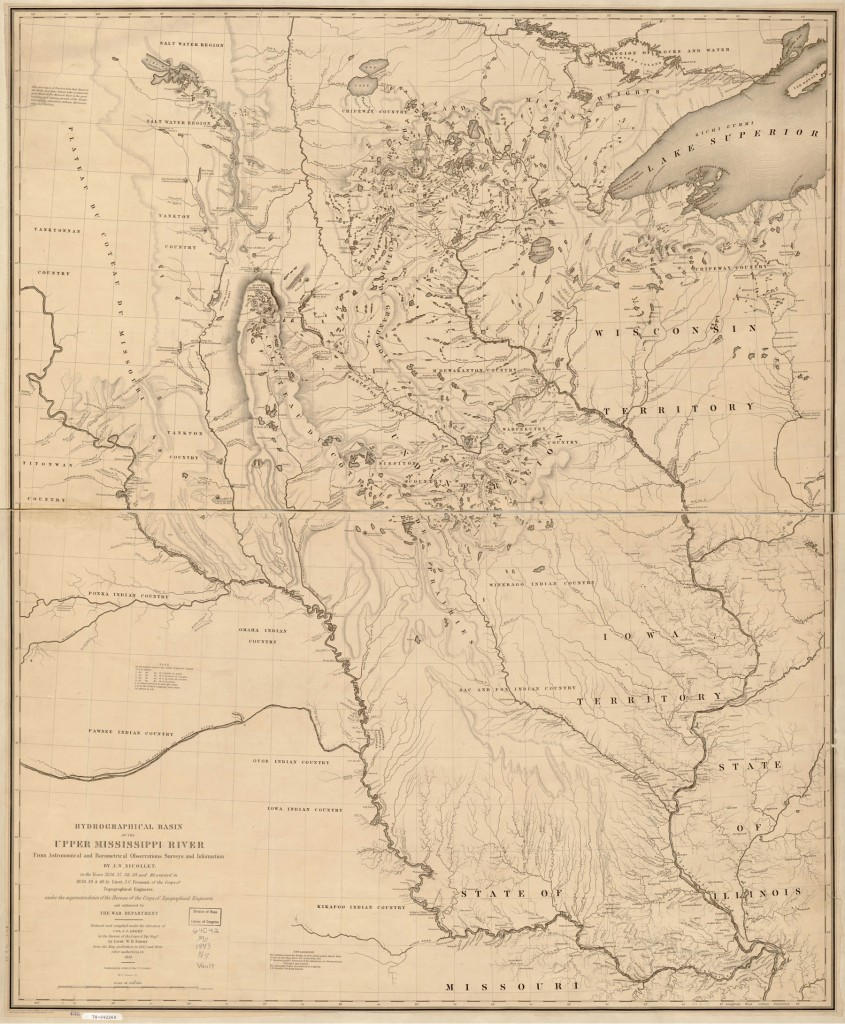 There is almost always a breeze over them. The security one feels in knowing that there are no concealed dangers, so vast is the extent which the eye takes in; no difficulties of road; a far spreading verdure, relieved by a profusion of variously colored flowers; the azure of the sky above, or the tempest that can be seen from its beginning to its end; the beautiful modifications of the changing clouds; the curious looming of objects between earth and sky, taxing the ingenuity every moment to rectify; all, everything, is calculated to excite the perceptions, and keep alive the imagination. In the summer season, especially, everything upon the prairies is cheerful, graceful, and animated. The Indians, with herds of deer, antelope and buffalo, give life and motion to them. It is then they should be visited; and I pity the man whose soul could remain unmoved under such a scene of excitement.”1
There is almost always a breeze over them. The security one feels in knowing that there are no concealed dangers, so vast is the extent which the eye takes in; no difficulties of road; a far spreading verdure, relieved by a profusion of variously colored flowers; the azure of the sky above, or the tempest that can be seen from its beginning to its end; the beautiful modifications of the changing clouds; the curious looming of objects between earth and sky, taxing the ingenuity every moment to rectify; all, everything, is calculated to excite the perceptions, and keep alive the imagination. In the summer season, especially, everything upon the prairies is cheerful, graceful, and animated. The Indians, with herds of deer, antelope and buffalo, give life and motion to them. It is then they should be visited; and I pity the man whose soul could remain unmoved under such a scene of excitement.”1
It was Nicollet’s great desire to return to the Coteau des Prairies after he completed the compilation of his research. Unfortunately, he fell ill and died in Washington D.C. less than 4 years after departing the Dakota prairie. Soon after his death, his work which was finished by his partners provided the basis for plans to settle this ‘exotic’ region. His name is memorialized throughout the region; the city and county of Nicollet in Minnesota and the famous Nicollet Island and Nicollet Avenue in Minneapolis, as well as the Nicollet Tower and Interpretive Center in Sisseton, SD. Nicollet is credited for naming the Coteau des Prairies, which is French for ‘slope or hill of the prairie’.
Following a tragic series of events known as the Dakota War of 1862 (or Sioux Uprising), an uneasy peace between white settlers and the native Sioux people was disrupted. President Abraham Lincoln established a new string of U.S. military forts on the western frontier to maintain order on the prairie. Among the installments were Fort Sisseton (originally Fort Wadsworth) and Fort Ransom. Coteau des Prairies Lodge is located between the two historical sites, near the Fort Ransom Trail, which was traveled by the U.S. Cavalry. Remnants of the original trail may still be spotted today on patches of native prairie in the area. Fort Sisseton is now a historical state park where visitors can learn about the fascinating history of that era. The Lake Traverse Reservation and its boundaries were established by the Lake Traverse Treaty of 1867.
After the discovery of the rich farmland of eastern North Dakota, and in particular the Red River Valley, railroad companies set out to populate this unsettled land in hopes of building a profitable corridor to the Pacific Northwest. In the late 1800’s, the Great Northern Railway operated agencies in Germany and Scandinavia to promote its venture. The railroad subsidized the cost of transporting families from Europe for the purpose of homesteading its territories.2 The settlers who homesteaded the area near the head of the Coteau des Prairies traveled primarily from northern Europe.
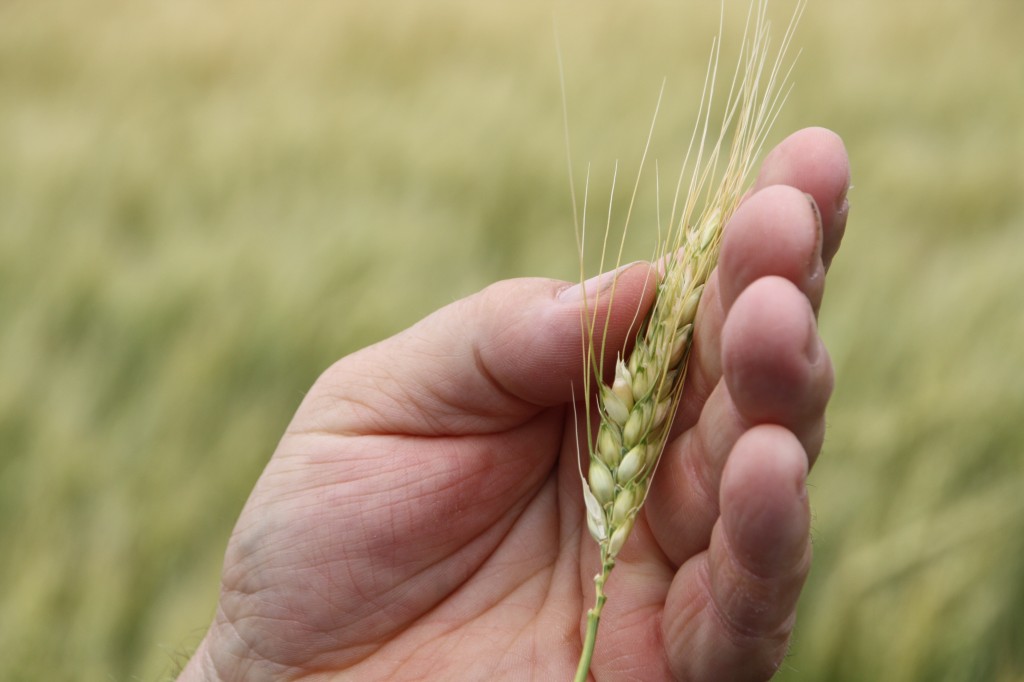 With hearts full of courage and a vision of the American dream, these folks pioneered the area, making it their new home away from home. They found the land was bountiful and good for farming. Virtually overnight, the area was bustling with these new agricultural adventurers. The work was hard and the winters harsh, but the pioneers thrived. Distinct ethnic communities sprang up on the prairie. Cultural differences including language, Christian denomination, food and tradition were important to the settlers. You can about imagine the ensuing scandal when a Lutheran gal (such as my Grandma Adeline) from Rutland fell in love with a handsome Catholic (my Grandpa Clarence) from Cayuga! These two communities, for example, only a few miles apart, represented cultural centers for Norwegians and Germans respectively.
With hearts full of courage and a vision of the American dream, these folks pioneered the area, making it their new home away from home. They found the land was bountiful and good for farming. Virtually overnight, the area was bustling with these new agricultural adventurers. The work was hard and the winters harsh, but the pioneers thrived. Distinct ethnic communities sprang up on the prairie. Cultural differences including language, Christian denomination, food and tradition were important to the settlers. You can about imagine the ensuing scandal when a Lutheran gal (such as my Grandma Adeline) from Rutland fell in love with a handsome Catholic (my Grandpa Clarence) from Cayuga! These two communities, for example, only a few miles apart, represented cultural centers for Norwegians and Germans respectively.
So it was and so it is today. Over a century has passed and agriculture is still at the core of the community. Technology and farming practices have improved by leaps and bounds, but it is still the family farm that is the engine of commerce. I myself am a descendent of the German and Norwegian settlers, and I am the fourth generation in a family which has made its living for over 100 years by farming the slopes of the Coteau des Prairies. This type of legacy, which is the pride of North Dakota, is still common in our community. While the divide between our European cultures has disappeared over time, the community cherishes and continues some of the traditions from the old days. 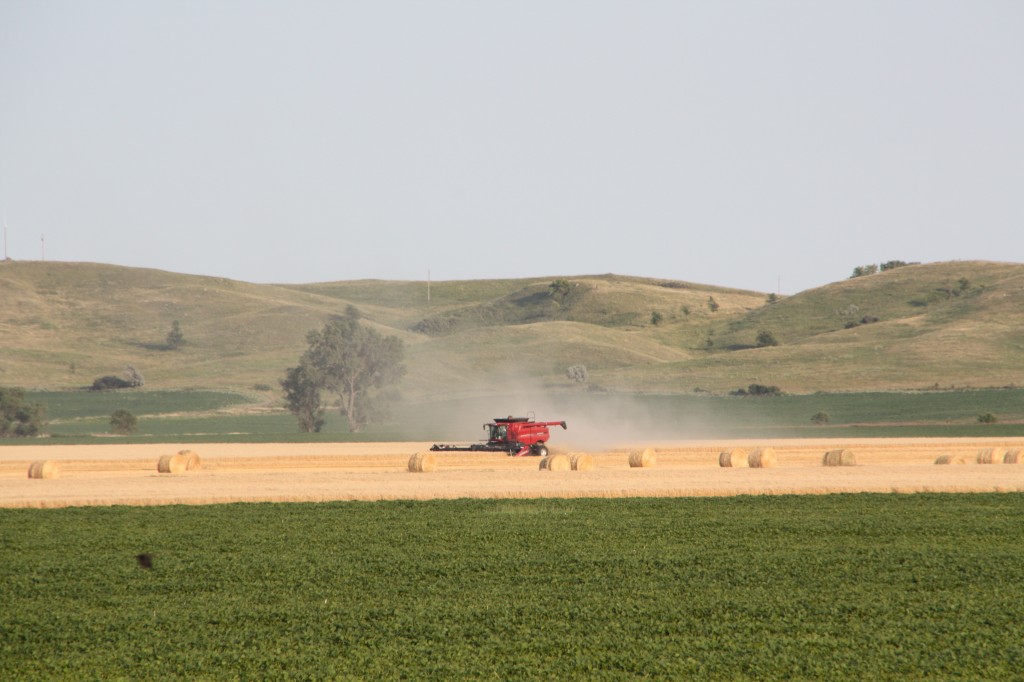 Rutland (population 163), for instance, holds an annual fall festival called Uffda Day. It is a celebration of Scandinavian heritage and it draws thousands of visitors each year.
Rutland (population 163), for instance, holds an annual fall festival called Uffda Day. It is a celebration of Scandinavian heritage and it draws thousands of visitors each year.
Finally, the Coteau des Prairies is the home and birthplace of a living legend. Terry Redlin, America’s most widely collected painter of nature and Americana credits his childhood home on the Coteau des Prairies as the inspiration for his art. Redlin’s intimate scenes of wildlife and nostalgic life on the prairie have captivated the hearts and minds of millions. It just so happens the backdrop for most of his paintings are none other than the charming woods, rivers, lakes and rolling grassy hills of the Coteau des Prairies. Generations will continue to be enchanted by the beauty of this place through the brush strokes of Mr. Redlin. Upon the Coteau des Prairies in Watertown, SD, where it all began, Redlin built a beautiful museum housing a vast collection of his original paintings.
Now, I hope you will agree the Coteau des Prairies is worthy of our state’s tourism tagline: ‘North Dakota Legendary’. But mostly, I hope you take time to come and see our little known but truly fascinating part of the world. See you on the Coteau!
About the author: Phillip Breker graduated from North Dakota State University with a PharmD and he practices pharmacy in Plymouth, Minnesota where he lives with his wife and five children. Phillip writes as one with experience of the Coteau des Prairies. Being raised in a home with a dining room picture window view of the Coteau des Prairies, he has never tired of the scenery. His favorite work growing up on the Breker family farm was his barbed wire fencing projects which regularly brought him up to the family’s pastures rimming the northernmost range of the Coteau des Prairies. You can inspect some of his fencing work when you visit Coteau des Prairies Lodge.
- Joseph N. Nicollet, edited by Edmund and Martha Bray, “Joseph N. Nicollet on the Plains and Prairies: the expeditions of 1838-39, with journals, letters, and notes on the Dakota Indians,” Minnesota Historical Society, 1976, pp 35, 204
- Robert F. Zeidel, “Peopling the Empire: The Great Northern Railroad and the Recruitment of Immigrant Settlers to North Dakota,” North Dakota History, 1993, Vol. 60 Issue 2, pp 14-23
[This article originally appeared in the September 8th, 2012 edition of The Sargent County Teller.]

